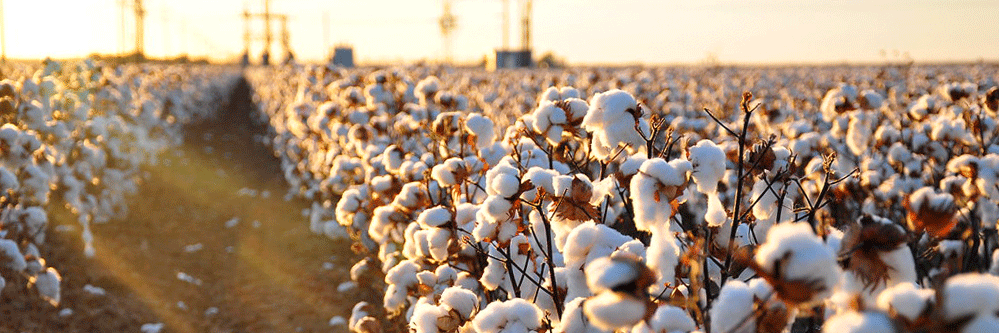Cotton information

-
The cotton plant is a shrub and is widely cultivated for its fiber and seeds in more than 90 countries of the world.
-
Cotton is grown on about 2.5% of the world's land
-
Cotton is originally a perennial plant but nowadays we cultivate it as an annual. We plant cotton in the spring and harvest it in the fall.
-
The cotton plant is one of the most important fiber and cash crops in India as well as throughout the world, playing a dominant role in the industrial and agricultural economy.
-
The seeding rate varies depending on factors like seed variety, growing areas and irrigation etc
Top quality Cotton cultivation
Cotton plants are very sensitive to weeds that compete with them for water and nutrients.

-
Cotton is a water thirsty crop and about 6% of the water used for irrigation is used for its cultivation.
-
It can be grown in all soils with a pH of 6 to 8. Deep, loamy, well-drained and fertile soils are good for cotton cultivation. Sandy, saline or waterlogged soils are not suitable for cotton cultivation.
-
Good yield requires good germination and complete soil preparation for crop growth.
-
Immediately after removal of ravi paddy, irrigation is followed by plowing with MB plow and planking.
-
Buying fresh and carefully selected cotton seeds is the first step towards a good yield and then preparing the soil so that it can welcome the seeds and facilitate their germination.
-
Fertility, irrigation and pest control are critical to obtaining good yields and represent the majority of costs.
-
The cotton plant prefers a warm and humid climate that requires long frost periods and needs lots of heat and plenty of sunlight.
-
The ideal air temperature for cotton is desirable at 21-37 degrees Celsius. For successful cultivation of cotton plants, frequent rainfall should not occur during ripening and harvesting days.
-
Balls should be picked when they are fully ripe. Avoid wet picking. Regular picking should be done every 7-8 days to avoid damage due to cotton falling on the ground. Delay in picking causes the cloth to fall on the ground and reduce the yield.

Diseases & Remedy of Cotton Crop


-
Jassids:It sucks the sap from the leaves and causes curling leaves that turn red or brown and then dry up.
-
Spotted Bolloworm:Larva is dull green, black in color and has a line of black spots on the body which makes holes in the ball and then causes ball rot
-
Use the certified seeds.
-
Avoiding the excessive application of fertilizers in the field.
-
Proper cleaning of the farm and tools used between seasons is essential.
Facts about Cotton
-
Immediately after removal of ravi paddy, irrigation is followed by plowing with MB plow and planking.
-
It provides the basic raw material to the cotton textile industry in India providing livelihood to 60 lakhs people and providing employment to around 40-50 million people from cotton trade and processing.
Top rice producing country & states


